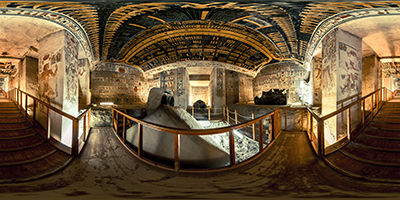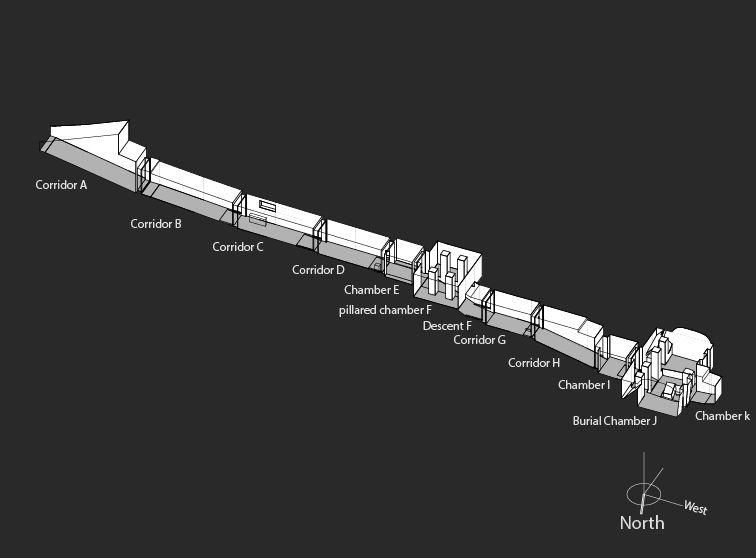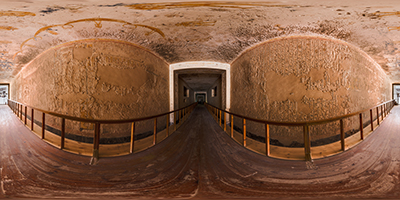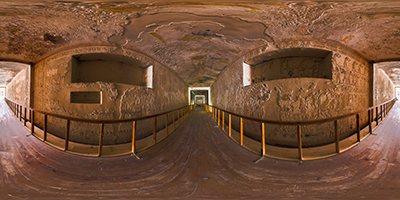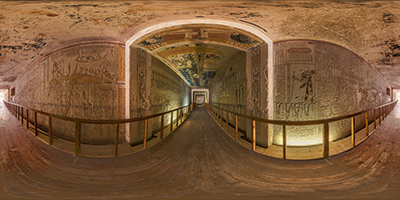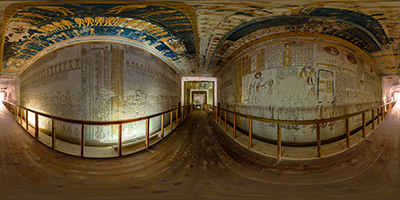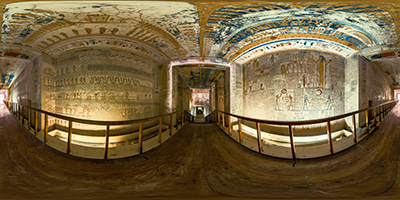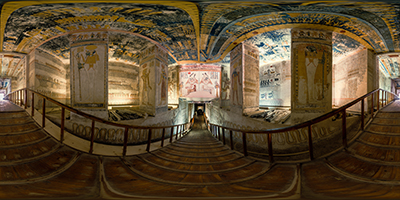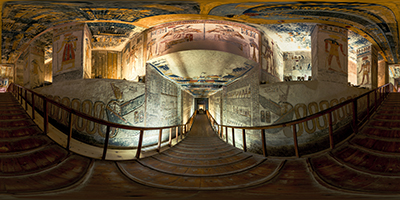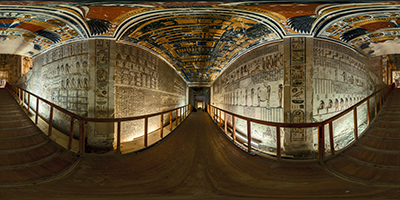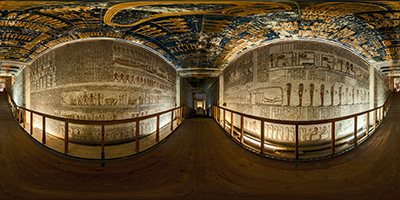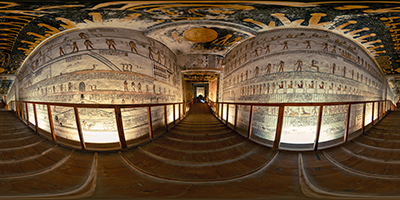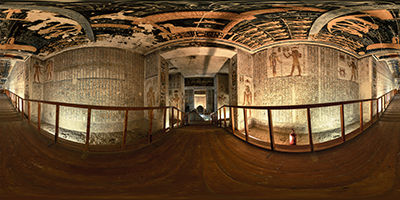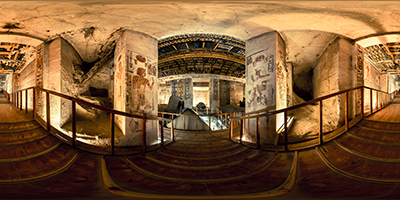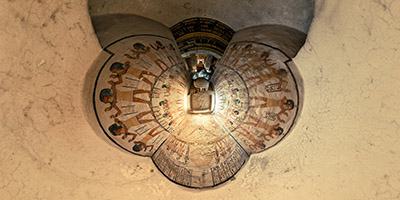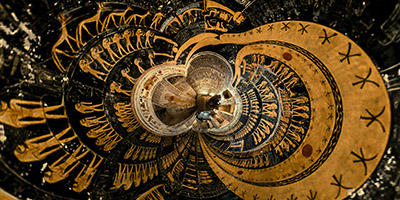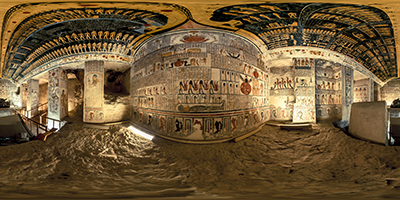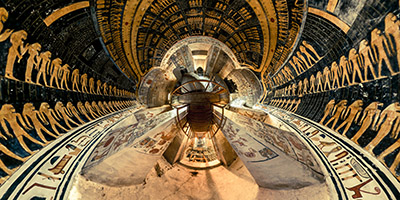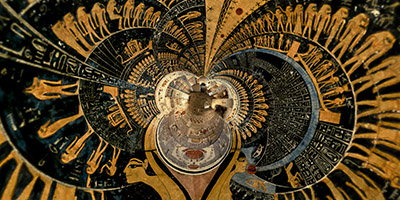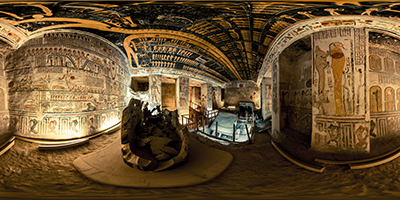The burial chamber is smaller than originally planned, The burial pit lies on the tomb's axis.
The burial chamber is known as
House of Gold Wherein One Rests
If the tomb had been completed, the right (north) and left (south) sides of
the lower floor level would have been extended, leaving only ledges for the upper floor
level on the left and right sides of the chamber,
instead of the wide surfaces now there.
The sides of the burial pit were roughly widened to accommodate a large,
red granite sarcophagus box, now broken in two, with its foot half lying in the pit.
Four pillars flank the front (east) wall of the chamber with two on each side
of the descent from the gate to the central lower level.
The first and fourth pillars were not completely cut away from the surrounding rock.
The pillars show Rameses VI with
"Ma'at",
"Ptah-Sokar",
"Anubis",
"Meretseger",
"Osiris",
and
"Ptah".
In the rear (west) wall, there are four pilasters, representing
unfinished cuttings of pillars.
The left, right and rear walls and pilasters are decorated with texts from
the Book of the Earth.
Pilasters 2 and 3 are inscribed with the names of Rameses VI.
The vaulted ceiling, which extends over the burial pit and the spaces to
its west and east, is cut at a right angle to the tomb's axis.
The Sky goddess "
Nut" is drawn twice separating the vaulted
ceiling into two spaces (east and west).
The space to the east depicting the "Book of day" with red disks "the sun"
inside the yellow body of Nut and a very dark blue background.
The book of Day holds names and epithets of Rameses the sixth.
and a description of the sun god
"Ra"
journey through the heavens in the day time before
he is swallowed by the sky goddess "
Nut".
The space to the west is depicting the "Book of night" with five points stars inside of Nut
and a black background representing the night.
The book of Night is a description of the sun god
"Ra"
journey through the heavens wherein he is swallowed
by the sky goddess
"Nut" in the evening and reborn in
the morning.
Conservation work
The burial chamber in the tomb of Ramesses VI assumed its present look after
the conservation project carried out there in the 2000s and directed by Ted Brock.
The sarcophagus box now displayed in the right-side part of the chamber was
pieced together from hundreds of fragments shattered in antiquity and previously
found in different parts of the tomb; it was decided to leave the gigantic
outer stone box (in which the sarcophagus was originally placed)
as it was - broken and displaced.
The current placement of the restored pieces is not the same as their original locations
but It was a serious conservation and presentation issue of where and how to put
the restored pieces (and what and how to restore in the first place)
and the project director Ted Brock and other professionals involved gave it
a very serious consideration before they settled on the current solution.
Finally, the mummy-like stone sarcophagus lid was put on display in the central
niche in the back wall (not its original place.)
The head part of the lid has been in London since the early 19th century.
Displayed in the tomb is an exact replica.
information about the conservation project was generously provided to us by
Mr. Jaroslaw Dobrowolski from:
ARCHiNOS A r c h i t e c t u r e
information about this very rich tomb is provided with a little help from our friends
at
The Theban Mapping Project ,
check out their amazing work documenting the valley and make sure you follow us for updates.




